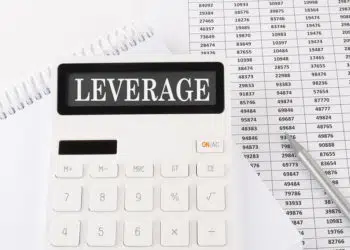All traders know about the several trillion traded daily in the forex market. Someone somewhere looks to take whatever piece of this pie they can realistically afford from Monday to Friday without ‘losing their shirts.’
Please make no mistake about it; size undoubtedly matters in forex. The difference between a mere 0.1 and 0.5 can be life-changing, both positively and negatively. More importantly, appreciating position sizing allows traders to accurately quantify the level of risk they take in the markets.
While numerous calculators exist online to use, which eradicate manual calculation, it’s beneficial to understand position sizing for newbies and those who may still need a refresher on this topic.
Understanding contract sizes
The core of position sizing is understanding the tradeable quantities of currencies themselves. In any position you take, you are essentially trading a specific number of units of the base currency.
The base currency is the first half of a pair, the symbol towards the left (the right being the quote currency). So, for instance, when buying or selling EURUSD, one trades a certain amount of euros against the dollar.
We express these according to different lot sizes as so:
- A standard lot size is 100 000 units of the base currency (1 lot size)
- A mini lot size is 10 000 units of the base currency (0.1 lot size)
- A micro lot size is 1 000 units of the base currency (0.01 lot size)
- A nano lot size is 100 units of the base currency (0.001 lot size)
The other piece of the puzzle with sizing is understanding pip values, which we’ll cover in the next section.
Understanding pip values
A percentage in point or pip is a measurement value used in forex describing the tiniest changes between exchange rates. For all major pairs (currencies paired next to USD but excluding exotics) and minor pairs (all the major currencies not paired next to USD but excluding exotics), we look at the fourth digit after the decimal to measure pips (0.0001)
With JPY-based markets (excluding exotic pairs), we observe the second digit to calculate the pips (0.01). For instance, if USDCHF decreased from 1.3720 to 1.3700, this would be 20 pips. Another example is if EURJPY increased from 132.00 to 132.15, it would be a 15-pip variance.
Once we grasp how we measure pips, we need to apply this knowledge to what makes up the lot size in the first place, which requires a comprehension of pip values. These will vary widely depending on the conversion price for each pair.
Pip value examples
Typically, AUDUSD, EURUSD, and GBPUSD all have pip values of $1 for every standard lot regardless of the exchange rate. In the previous 20-pip example for GBPUSD, a standard lot (simply expressed as 1 or 1.00), the 20 pips would be worth $20 ($1 X 20).
Let’s go over a slightly more complex example using the EURJPY scenario as briefly discussed. Assume a trader wanted to trade 52000 units of this pair or 0.52 lots. To determine the pip value for this market, we would use the USDJPY exchange rate as our conversion price (most yen pairs use the same).
At the time of writing, the price for USDJPY is 110.245. After this, we would need to use this formula:
0.01 (the minimum pip measurement for USDJPY) divided by 110.245 (the conversion price) multiplied by 52 000 (the units)
Rounded off to the nearest two decimals, $4.71 is the answer. Therefore, a 15-pip increase (as in the earlier example) from a 0.52 lot size would reflect a floating P&L of about $70.65.
Position sizing mistakes
The first biggest mistake some traders commit with position sizing is using the same lot sizes irrespective of the market. Thinking in this manner is quite erroneous.
Every pair has vastly different pip values. Therefore, a 0.1 lot size on USDCHF, for instance, will have a completely different value compared to GBP-based pairs.
It only takes a few minutes to determine an appropriate position size using a calculator based on the dollar amount you plan to risk. Another fault has to do with time frames. Some traders believe if you’re trading higher time frames, from the daily and above, you’re automatically taking more risk due to the larger stops.
Fortunately, this isn’t the case, as traders only need to reduce the lot size to keep the same monetary risk they would allocate on lower time frames. Overall, the point is you should analyze every position individually and know how to size appropriately according to how much money you plan to risk each time.
Final word
Due to the low barrier to entry afforded by the decentralization and online technology in forex, just about anyone can trade currencies from the comfort of their own homes; it’s not just large financial institutions anymore.
Yet, we could consider these groups to be at a slight advantage because of their substantial capitalization. Plenty of research suggests many struggling and losing traders are heavily under-capitalized, making them more prone to losing substantial amounts.
If we couple this with the high leverage offered by brokers, we can compound the problem even quicker. Part of this failure largely has to do with traders taking far bigger positions than their accounts can handle based on the margin available.
Too many traders want crazy gains which their equity cannot contain within a reasonable period. Hence, choosing a position size for each trade shouldn’t be random but should be based on your strategy, skill level, and the maximum drawdown you can handle.
Internalizing the monetary amount attached to a particular lot size is more crucial, of course, as this is what truly reflects your personal tolerance. Overall, appreciating the influence of position sizing is the foundation of money management in forex.







